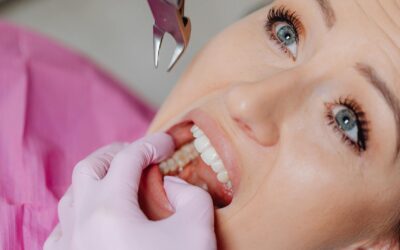Pulling out a tooth at home may sound intimidating. But with the right techniques and safety steps, the process can be done smoothly—especially when the tooth is loose or wiggly. Whether you’re dealing with a baby tooth or an adult tooth that’s damaged or cracked, this guide will walk you through how to pull out a tooth safely and easily without causing unnecessary pain or injury.
Note: Always consult a dentist if you’re unsure about the tooth’s condition or if you experience persistent pain or bleeding.
- When Is It Safe to Pull a Tooth at Home?
- How to Pull Out a Tooth Without It Hurting: Step-by-Step Guide
- Tips on How to Pull Out Specific Types of Teeth
- Natural Ways to Encourage a Tooth to Loosen
- Common Mistakes to Avoid
- When to Seek Professional Help
- What Experts Say
- Frequently Asked Questions
- Final Thoughts
When Is It Safe to Pull a Tooth at Home?
Before you take any action, it’s important to determine if pulling out a tooth at home is safe. According to the American Dental Association (ADA), you should never attempt to pull a permanent tooth unless it’s extremely loose—such as visibly wiggling with minimal effort—or severely damaged to the point that it is barely hanging by the gum tissue. These conditions suggest the tooth may naturally fall out soon or pose a risk of injury if left in place. it’s extremely loose, severely damaged, or under a dentist’s recommendation.
Safe Scenarios Include:
- A wobbly baby tooth that’s ready to fall out
- A severely cracked or broken adult tooth (only if professional help isn’t immediately available)
- A loose adult tooth due to gum disease (consultation recommended)
How to Pull Out a Tooth Without It Hurting: Step-by-Step Guide
1. Assess the Tooth Condition
Make sure the tooth is:
- Clearly loose or wiggly
- Not attached to sensitive or inflamed gum tissue
- Free of infection or pus
Remember: If the tooth isn’t visibly moving with light pressure, do not attempt to pull it. Forcing a stuck tooth can damage surrounding nerves or bone.
2. Wash Your Hands & Sterilize Tools
- Wash your hands thoroughly with soap
- Prepare sterilized gauze or cotton
- Optional: Sterilize tweezers or floss if you plan to use them
3. Numb the Area (Optional but Helpful)
You can apply an over-the-counter oral numbing gel to reduce discomfort. Ice wrapped in cloth also helps dull sensation around the gum.
4. Wiggle the Tooth
Use a clean tissue or gauze to grip the tooth and gently rock it back and forth. If it’s a child’s tooth or naturally loose, it may pop right out.
5. Use Dental Floss (For Baby or Wobbly Teeth)
- Tie a small loop of dental floss around the base of the tooth
- Pull the floss with a swift, firm motion
- Apply light pressure to the area with gauze afterward to stop any bleeding
6. Aftercare
- Rinse with warm salt water (avoid mouthwash with alcohol)
- Apply a cold compress to reduce swelling
- Stick to soft foods for 24 hours
- Monitor for signs of infection like swelling, redness, or fever
Tips on How to Pull Out Specific Types of Teeth
How to Pull Out a Wiggly Tooth
- Encourage the person (usually a child) to wiggle it daily
- Let nature take its course—often it will fall out while eating
- Ensure the gum area is clean to avoid infection
How to Pull Out an Adult Tooth at Home
- Only if severely loose or broken due to trauma (never force a tight tooth)
- Use gauze to grip and gently rotate
- Follow up with a dentist ASAP for further evaluation
How to Pull Out a Cracked or Broken Tooth
- If sharp edges cause pain, use dental wax to cover it
- Avoid pulling unless the tooth is detached and hanging
- Contact a professional immediately for safe extraction
Key Note: A cracked tooth that isn’t loose should be treated by a dentist. Pulling it yourself can risk infection or jaw injury.
How to Pull Out a Tooth That Isn’t Loose
- Do not attempt it at home. It may require surgical extraction or anesthesia
- Seek professional dental care immediately
How to Pull Out a Loose Tooth Without Pain
- Wiggle the tooth frequently to loosen it more
- Use a cold compress or oral anesthetic beforehand
- Pull quickly and firmly for less discomfort
How to Pull a Broken Tooth Out at Home
- Only if it’s dangling or clearly detached
- Avoid touching exposed roots or nerves
- Use clean tweezers and gentle movements
Natural Ways to Encourage a Tooth to Loosen
If the tooth is not quite ready to come out, these methods can help:
- Eat crunchy fruits and vegetables: Apples and carrots naturally apply pressure
- Gargle warm salt water: Reduces inflammation and softens gums
- Brush gently but frequently: Loosens weak roots without damage
Tip: Avoid forcing loosening methods more than twice a day to protect gums.
Common Mistakes to Avoid
- Pulling a healthy or firmly attached adult tooth
- Using dirty tools or unwashed hands
- Not disinfecting the area afterward
- Ignoring signs of infection or prolonged bleeding
- Pulling too slowly, which may cause more pain
When to Seek Professional Help
Even if the tooth seems ready, there are times when medical attention is best:
- Tooth isn’t budging despite being wobbly
- Persistent bleeding (more than 10 minutes)
- Swelling or pus around the gums
- Fever, chills, or foul breath odor after pulling
- Severe pain during or after extraction
What Experts Say
The American Dental Association (ADA) and platforms like Mayo Clinic and WebMD recommend avoiding at-home extractions unless absolutely necessary. They emphasize hygiene, proper technique, and the importance of dental aftercare to prevent complications. PubMed research has shown that improper at-home tooth removal can increase the risk of infections and damage to the periodontal ligament.
While it may be tempting to handle dental issues yourself, expert guidance ensures long-term oral health and prevents complications like dry socket, nerve damage, or bone exposure.
Frequently Asked Questions
Can I pull out a tooth that isn’t loose at home?
No, you should not attempt to pull out a tooth that isn’t loose. Doing so can damage nerves, cause infection, and may require surgical extraction. Always consult a dentist first.
How do I pull out a loose tooth without pain at home?
To pull out a loose tooth without pain, apply an oral numbing gel, wiggle the tooth gently for a few days, and use clean gauze or floss for a quick pull when it’s ready.
Is it safe to pull a broken tooth out at home?
Only if the broken tooth is extremely loose or hanging by a thread. Avoid touching exposed roots and consult a dentist immediately if it’s firmly attached or painful.
What’s the best way to pull a wiggly tooth in a child?
Encourage natural loosening by letting your child wiggle the tooth daily. Once it’s very loose, you can use sterile gauze or floss to pull it out gently and quickly.
How can I pull an adult tooth out at home safely?
Only pull an adult tooth at home if it’s visibly loose due to injury or gum disease. Use clean tools, numb the area, and gently twist or pull. Follow up with a dentist promptly.
Final Thoughts
Learning how to pull out a tooth safely at home can be helpful in minor situations like loose baby teeth or wiggly adult teeth caused by gum issues. But never take chances with your dental health—if in doubt, always seek professional help. A few minutes with your dentist can prevent serious complications down the line.
Keep safety, hygiene, and comfort your top priorities when dealing with a loose tooth. And remember, not all teeth should be pulled at home—sometimes patience and professional care are the best solutions.
Disclaimer: The content provided in this article is for educational and informational purposes only. It does not substitute professional medical advice, diagnosis, or treatment. For guidance specific to your dental condition or recovery, please consult your dentist, oral surgeon, or licensed healthcare provider.










0 Comments